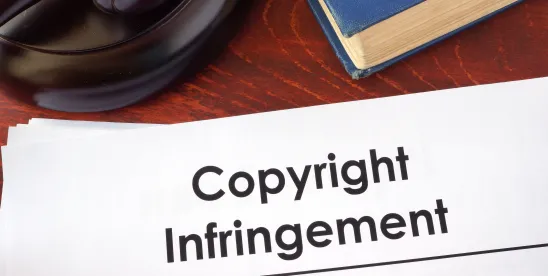On January 29, 2025, the Copyright Office (the “Office”) released its second report in a three-part series on artificial intelligence and copyright. Part 1 was released in July 2024 and addressed digital replicas. Part 2 focuses on the copyrightability of AI-generated work – that is, providing greater detail into what level of human interaction is required for a work containing AI-generated works to rise to the level of copyrightability. The report includes eight conclusions to guide copyright applicants and concludes that existing law is sufficient to address copyrighting AI-generated works.
In short, the report finds that protection of AI-generated works requires “sufficient human control over the expressive elements [of a work]” (emphasis added). Thus, not surprisingly, the report finds that prompts alone do not meet this threshold because they are merely unprotectable ideas. Despite this bright-line rule on prompts, the Office seemingly makes an exception for when humans input their own original works as prompts, such as uploading an original drawing into an AI-art generator. If that human-authored work is “perceptible in the output,” copyright protection is at least available for that portion of the AI-generated work.
The Office distinguishes between using AI tools to “assist” with creation and using the AI as a “stand in” for the human’s creativity. Assistance should not impact the copyrightability of the overall work, but copyright protection is less likely once the generative AI stands in as the creative. The Office did not expand upon when “assisting” becomes “standing in,” but noted that using AI to “brainstorm” is likely not a bar to copyrighting the completed work so long as the AI output is not “incorporated” in the finished product.
While it is now clear that prompts alone are insufficient to “control” the expressive elements, it is less clear what will reach this “sufficient” threshold to garner copyright protection, as the Office will make these determinations on a case-by-case (and examiner-by-examiner) basis. For works including AI-generated content, applicants should continue to provide statements detailing their human contributions.
Importantly, post-Loper Bright, the Copyright Office’s report, while it can be influential for courts and academics, does not have the final say on the matter. Specifically, assuming the degree of human input necessary for copyright protection to exist in works created using AI is found to be ambiguous, Loper Bright holds that only courts can determine what AI-generated outputs are protectible, and ultimately SCOTUS if any case goes that far. For more on this shift of regulatory power from agencies to courts, see our Loper Bright blog post.
Takeaways from the Report
• Copyrightability of AI will be addressed with the existing law, which includes the “human authorship” requirement.
• No copyright protection for works purely generated by AI or where there was “insufficient human control over the expressive elements.”
• Prompts alone – even if extremely detailed – do not exert “sufficient control” over the output to make it copyrightable, but “where a human inputs their own copyrightable work and that work is perceptible in the output, they will be the author of at least that portion of the output.”
• Using AI tools to assist with the creation of the work should not interfere with the copyrightability of the overall work. If, however, the AI “stands in for human creativity,” copyright may not be available. Using AI to “brainstorm” (e.g., for song ideation or creating a preliminary outline for writing) should not affect copyrightability if the user is “prompting” the AI and “referencing, but not incorporating, the output in the development of her own work of authorship.” (Emphasis added.)
• Original expression by a human author is still copyrightable, “even if the work also includes AI-generated material.” For example, adding AI special effects to a human-authored film would not destroy the copyrightability of the film itself (though the AI special effects would not have protection and should be disclaimed when filing an application).
• Copyright protection is still available for “the creative selection, coordination, or arrangement of material” in the AI-generated outputs, or “creative modifications of the outputs.” Applications for such works will be analyzed by the Office on a case-by-case basis, so applicants should include a detailed statement of their human contributions.
The Copyright Office’s highly anticipated third report is expected to address “the training of AI models on copyrighted works, licensing considerations, and allocation of any liability.” We expect this report to be the most impactful on the AI market and its future.





 />i
/>i

